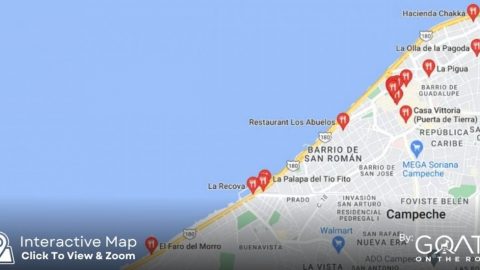Editor’s Note — Monthly Ticket is a new CNN Travel series that spotlights some of the most fascinating topics in the travel world. In May, we’re riding the rails as we explore the world’s greatest train journeys. Whether you’re looking for travel inspiration or insider knowledge, Monthly Ticket will take you there.
(CNN) — The summer Tim Thomas was 18, he packed up a rucksack, left his small hometown in the south of England and hopped on a train to France, kicking off a month-long journey through Europe by rail.
It was 1972. Thomas was among the first travelers to take advantage of the fledgling European Interrail pass, which allowed young people under 21, across 21 participating countries, to buy a £27.50 (at the time about $67) ticket for unlimited travel across Europe by train for a full month.
The Interrail pass was dreamed up by the International Union of Railways (UIC), a body overseeing Europe’s railways that’s since ceded control of Interrail to the independent Eurail company.

The Interrail pass premiered in 1972 and is still available for European train travelers today.
Collection NMBS/SNCB — Train World Heritage
The UIC emerged in 1922 after Europe’s borders were rearranged following World War I and the subsequent Treaty of Versailles. In 1972, the organization envisaged the cross-Europe travel pass as a fun way to celebrate its 50th birthday and to encourage rail travel among European youth. A similar scheme, the Eurail pass, already existed for international travelers — why not open the continent’s trains up to young Europeans?
“There was no high speed rail, there were no low cost flights, there were less coaches — and overall travel was on a totally different level than today,” Alexander Mokros, chairman of Eurail, tells CNN Travel.
“People were traveling much less. So they had this great idea to launch a special product specially for youths, so everybody, until the age of 21, could discover the continent.”
It wasn’t just travel that was different in 1972. The map of Europe looked different, too. The first iteration of the Interrail pass focused on north, west and southern Europe, with eastern Europe largely blocked off behind the Iron Curtain.
Brightly colored posters were plastered across Europe’s railway stations and word spread about the UIC’s rail offering. Young people discussed plans and sketched out routes.

Tim Thomas took photographs of his 1970s Interrailing adventures including this shot of Copenhagen train station.
@timofnewbury
Thomas reckons Interrail first arrived on his radar via a poster.
“I’ve always enjoyed train travel, and so I went with a friend who I’d been at school with,” he says.
Still, Thomas’ trip was nearly over before it began: as his train set off down the English coast towards the gateway port of Dover, Thomas realized he had left his bag in the waiting room at Ashford station, a stop on the line between London and Dover.
Today, a bag abandoned in a railway station is liable to be removed and destroyed. In 1972, Thomas explained the dilemma to train staff who told him not to worry — they would pass on the message through their network, and the bag would be sent up on the next train and they could do a handover at Dover.
“Sure enough, I just had to wait on the platform, and the next train came along and the driver handed it out of his cab to me,” recalls Thomas.
“From then on, I believe, we managed to avoid making too many mistakes like that.”

Tim Thomas shares his digitized slides on his Twitter account @timofnewbury, including this shot of a double decker train in Germany.
@timofnewbury
Thomas and his friend journeyed around Europe in what he describes as a “figure of eight” route. They headed first to southwest France, then across to Switzerland, up to Denmark, then down to Athens in Greece via Yugoslavia and Munich, Germany.
“We got our full month’s worth, and I’ve kept all the itineraries with the detail of the individual trains and the distances involved,” says Thomas.
And in this pre-euro, pre-online banking world, if the travelers wanted to exchange currencies, they had to line up at the bank, passports in hand.
They saved money by sleeping on the train wherever possible. Otherwise, they’d bunk down for the night in hostels.
Thomas reckons they were lucky that, as 18-year-olds exploring their first taste of independence, the biggest obstacle they faced en route was sunburn. They enjoyed pretty much every day of the trip.
“It’s a kind of freedom isn’t it, when you’re away from home?” says Thomas.

Tim Thomas was 18 when he first went Interrailing. Here he is on his second Interrail trip, visiting Zadar, then in Yugoslavia, now in Croatia, in 1973.
@timofnewbury
Martin McKee, who grew up in Northern Ireland, set out on his inaugural Interrail trip in 1972. Only 15, he traveled with three friends from school. Over the course of the month, the group occasionally split ways, but reconvened at various points along the journey.
Exploring Europe at a formative age had a significant effect on McKee’s way of thinking. A year or so after the trip, he interviewed at the University of Newcastle in England, where he hoped to study medicine. Amid the ongoing context of the sectarian violence in Ireland known as “the Troubles,” the interviewers asked McKee if he considered himself British or Irish.
Teenage McKee replied that he was European.
“The people that were traveling, who were my age or older, and who had that sort of curiosity and wanted to see the world, we all had much, much more in common than the communities that we came from,” he tells CNN Travel.
Today, McKee is a professor of European public health at the London School of Hygiene and Tropical Medicine, and in 2020 he became a member of the World Health Organization convened Pan-European Commission on Health and Sustainable Development.

Tim Thomas took this photo of Myrdal train station in Norway in 1973.
@timofnewbury
All in all, 87,000 young people traveled via the EU Interrail pass in 1972, according to Eurail. Such numbers meant that for the UIC, continuing the scheme beyond that inaugural year was a no-brainer.
Thomas went Interrailing again in 1973 and 1974. On all three trips, his Hanimex Compact R camera came with him. The device’s small size made it pretty easy to transport.
Snapping photos of the length and breadth of Europe, Thomas tried to avoid getting people in his photos. But today, looking through his slides, he enjoys the ones with photobombing strangers more than the emptier scenes — they offer a taste of life in Europe at the time, 1970s bell bottom jeans and all.
Interrailing through the 1970s

Trudy Harpham is pictured here at Kiruna rail station, Sweden, 1976. “As far north as Interrail would take me,” is how Harpham describes Kiruna.
Courtesy Dr Trudy Harpham
As the 1970s progressed, “Interrail” became a verb, a staple of European travel vernacular.
Trudy Harpham, emeritus professor at London South Bank University, went Interrailing on three consecutive college summer vacations.
“As a student, the cheap deal of Interrail for a month in the summer was pretty irresistible,” she tells CNN Travel. “I wanted to go as far as the scheme would allow me.”
On the first trip, in 1975, Harpham and her then boyfriend packed up their backpacks and a two-person tent and snaked across Europe by rail, reaching Istanbul in Turkey.
“I was stepping into the unknown,” Harpham recalls, but she found a friendly and convivial atmosphere among the Interrailing community.
“It felt so sociable and communal and exciting,” she says.
As the trains chugged across the continent, Harpham jotted down her observations on countries and their cultures in dispatches back home to England.
“Almost in every new country that I crossed into, I wrote a postcard to my parents in Lincolnshire, who were delighted to receive them,” says Harpham.
Harpham’s mother kept all the postcards, telling her daughter that one day she would appreciate being able to look back on her adventures.
Of course it wasn’t all exciting. Long periods on trains could be tedious. On Harpham’s 1973 trip, which included traveling up to the Arctic Circle in Norway, she recalls thinking that she “didn’t want to see another birch tree forest in my life after that.”
Trudy Harpham, 1970s Interrailer
But most of the time, Harpham relished the experience of waking up in a new place after a night of travel.
“If we were lucky enough to have a seat, pushing that old fashioned blind up the window and peering out and wondering where you were was just magical,” she recalls.
Today, British-born Harpham lives in Switzerland. She’s retired, but worked in international public health and lived in over 50 countries.
Harpham recalls returning from her summers Interailing and feeling like she was in a club made up of young people from across Europe.
“Only the others who did it really understood the feeling of liberation and excitement and sheer exposure, wonderful opportunities to see so many places in a relatively short time, and relatively low cost,” she says.
Interrail today

Interrail has developed over the years since this 1980s advertising poster.
Deutsche Bahn Stiftung/DB Museum
In 2022, the European Interrail pass turns 50. It has morphed and developed over the years, but the fundamental concept remains unchanged — a relatively simple railway gateway to Europe.
The biggest difference between the scheme today and its early years is it’s now open to everyone, of all ages.
Today, there’s also a greater range of Interrailing options. Travelers can choose based on number of travel days and class of ticket.

Tim Thomas took this photo in Budapest, Hungary in 1974. Thomas is now retired and planning his next European rail adventure.
@timofnewbury
The Eurail pass, the version for international travelers, also still exists. Prices are identical to Interrail, also starting at €185 (around $198) for under 27s traveling four days within one month.
Times have changed, but Mokros, from the Eurail team, suggests the appeal of Interrailing is more or less the same as it was for the inaugural 1970s travelers, and ticket holders today enjoy being part of a long line of Interrailers past and present.
“Even if you’re traveling alone, you’re not traveling alone, you’re traveling somehow with others, you’re crossing with others, you’re making stories you can talk about without others,” says Mokros.
The continent-spanning pass also represents a sense of European unity, which has an added resonance in a post-Brexit, post-Covid Europe grappling with the impact of the Russian invasion of Ukraine.
Today, when Tim Thomas looks over his plethora of photos of his Interrailing days, he finds himself dreaming of future rail adventures. He’s got a train trip to Antwerp, Belgium in July, and hopes there might be more to come.
“I suppose it’s almost my idea of the ideal way to spend my life, just wandering around looking at new things, seeing different landscapes and different buildings,” he says.
CNN’s Maureen O’Hare contributed to this story






Recent Comments